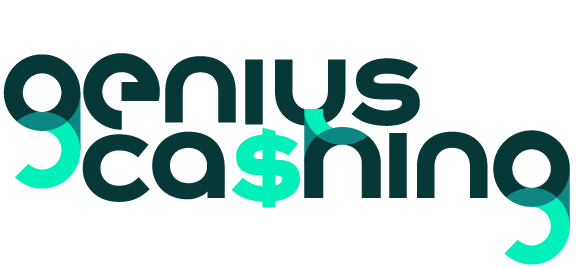Can You Really Make Money Investing in Domain Names?

Can You Really Make Money Investing in Domain Names in today’s saturated digital landscape, or is it merely a relic of the dot-com boom?
Anúncios
This niche asset class, often dubbed “digital real estate,” has quietly generated massive returns for savvy investors, but it requires a unique blend of foresight, market knowledge, and patience.
The internet’s foundational addressing system the domain name remains the primary gateway for any business, brand, or idea, guaranteeing its inherent value and continuing the tradition of high-stakes flipping.
This seemingly simple investment involves acquiring web addresses at registration prices and reselling them years later to corporations or startups for substantial profits.
Unlike traditional investments, domain valuation is highly subjective, driven by branding potential, keyword relevance, and the coveted .com extension.
Anúncios
We’re in 2025, and while prime .com names are mostly gone, new Top-Level Domains (gTLDs) like .ai and .tech are creating fresh opportunities, forcing us to re-evaluate the market’s true potential.
What is Domain Flipping and How Does It Work?
What is the Process of Turning a Domain into a Profit?
Domain flipping is the practice of purchasing a domain name at a low price and reselling it to an interested party for a significantly higher price.
The process is streamlined but demanding: it requires deep market research to identify high-potential names, strategic registration at low cost, and then effective marketing to attract the right buyer.
Unlike an active business, the domain often remains “parked” with a simple “For Sale” landing page, awaiting the right acquisition offer.
The successful flipper acts as a market intermediary, bridging the gap between a brand’s perfect digital identity and the initial low registration fee.
They capitalize on the time it takes for a market trend to mature or for a startup to scale up and realize the immense value of a precise, brandable name.
This strategy necessitates a patient, buy-and-hold mentality for most high-value names, awaiting the convergence of demand and corporate budget.
++ Why Billionaires Are Buying Sports Teams as Investments
Why Do Companies Pay Millions for Simple Domain Names?
Companies pay exorbitant sums for simple, keyword-rich, or brandable domain names because the domain is their fundamental digital identity.
A premium domain like a single word (.com) offers instant authority, credibility, and memorability, acting as a massive competitive advantage.
Think of the millions saved in advertising, recall, and trust when a business operates on a perfect, intuitive address.
For a multi-billion dollar corporation, paying a few million dollars for the perfect name is a fractional marketing expense that secures their global online foundation forever.
The sheer commercial necessity of a .com name that perfectly matches a product or service justifies the high prices, especially for names in high-value industries like finance, AI, and healthcare.
The Rocket.com sale for $14 million in 2024 is a clear demonstration of this continued corporate necessity.

What Domains Hold the Highest Value? The Key Metrics
Which Types of Domains Generate the Biggest Returns?
The biggest returns overwhelmingly come from short, generic, and .com domains. Names that are short (two or three letters), common dictionary words (e.g., “Gold.com”), or essential two-word phrases (e.g., “BestOdds.com”) possess immense inherent value.
These names are scarce, universally understood, and instantly brandable, making them the “Park Place” and “Boardwalk” of the digital real estate world.
Furthermore, three-letter (.com) and four-letter (.com) acronyms, while less intuitive, retain significant value due to their extreme scarcity and desirability in the Chinese market.
New investors should not overlook Country Code TLDs (ccTLDs) like .co or .tv, or New gTLDs like .ai. In fact, the .ai extension has seen massive growth, proving that market relevance can sometimes trump the .com authority, particularly in emerging sectors.
Also read: Is Fine Art a Better Investment Than Stocks?
How Do New TLDs Like .AI and .TECH Impact Valuation?
The introduction of New Generic TLDs (gTLDs) has fundamentally altered the investment landscape, shifting focus from pure scarcity to industry relevance.
Extensions like .ai (for Artificial Intelligence) and .tech (for technology startups) allow businesses to create highly targeted and memorable brands, even if the equivalent .com is unavailable.
The rapid adoption of these extensions indicates a growing willingness among buyers to pay premium prices for relevant, non-.com names.
This trend creates a fresh hunting ground for domain investors, shifting the strategy from merely hoarding generic keywords to anticipating and acquiring domains in emerging high-growth industries.
An investor who registered “Quantum.xyz” or “Cloud.ai” for a nominal fee a few years ago is now positioned for a massive return, demonstrating that specialized, futuristic relevance is a powerful valuation driver in 2025.
What are the Risks and Rewards of Digital Real Estate?
Why is Domain Investing Analogy to Real Estate Appropriate?
Domain name investment is frequently compared to traditional real estate, and the analogy is highly appropriate.
Just as commercial real estate is valued based on location, location, location, domain value is determined by its relevance, relevance, relevance.
A prime piece of digital land, a short and memorable .com, is equivalent to owning a highly visible property on a major metropolitan corner.
Moreover, the market operates similarly: you buy the asset, park it (hold it), and wait for a buyer whose specific commercial need for that location drives the price up exponentially.
The primary difference is the cost of entry; digital real estate can be purchased for less than $10 per year, compared to physical property, yet the potential for seven-figure sales remains.
Read more: Why Vintage Sneakers Are Becoming Million-Dollar Investments
What is the Major Risk Investors Should Be Aware Of?
The major risk for domain investors is the highly illiquid and unpredictable nature of the market. You can register a thousand domains for low cost, but if nobody specifically wants those names, they are worthless.
Unlike stocks or bonds, there is no intrinsic value based on financial performance; value relies entirely on a single, motivated buyer emerging.
Another significant risk is the low barrier to entry, which has increased competition substantially. Finding unregistered, high-value names is extremely difficult, pushing many investors toward marginal names that may never sell.
Investors must maintain yearly registration fees, which can quickly turn a large portfolio into a substantial, ongoing expense with no guarantee of return, requiring both capital and an incredible amount of patience.
The AI Gold Rush
A prime example of value creation occurred between 2023 and 2025 with the explosion of the AI sector. Domains incorporating the letters ‘AI’ or the full word ‘Artificial Intelligence’ suddenly became premium assets overnight.
An investor who had registered “SmartEngine.ai” for a standard registration fee of around $60 in 2023 could now realistically sell that domain for upwards of $100,000 to an AI startup.
This massive, rapid appreciation demonstrates the volatile, trend-driven nature of domain investing.
The Typo-Squatting Trap
A more dangerous example is the practice of typo-squatting, where an investor registers a common misspelling of a major brand’s domain (e.g., “Amazone.com” instead of “Amazon.com”).
While historically a lucrative strategy, current law strongly protects trademark holders.
A brand can sue or file a UDRP (Uniform Domain-Name Dispute-Resolution Policy) complaint, forcing the investor to forfeit the domain without compensation, turning the investment into a complete and costly loss.
| Domain Characteristic | Value Driver | Investment Strategy | Price Range (High-End Sales 2024-2025) |
| Generic Keyword .COM | Authority, Trust, Typability | Buy and Hold (Long Term) | $1M – $14M+ (e.g., Rocket.com) |
| Short Acronym/Letters .COM | Extreme Scarcity, Brandability | Arbitrage, Direct Sale to Corporations | $500K – $2M (e.g., TP.com) |
| Niche/Industry .AI, .TECH | Relevance, Future Trend Alignment | Anticipatory Investing (Medium Term) | $100K – $600K (e.g., Cloud.ai) |
| Brandable/Unique Words | Trademark Potential, SEO Value | Develop and Flip, High-Volume Low Cost | $1K – $50K |
Conclusion: Is Domain Investment a Viable Strategy?
Can You Really Make Money Investing in Domain Names? The answer is unequivocally yes, but only for those who approach it as a calculated, long-term business, not a get-rich-quick scheme.
The market for premium names remains robust, driven by corporate branding needs and the explosion of New gTLDs in tech sectors.
However, this is a capital-light, labor-intensive investment that requires anticipating the next major industry trend years in advance.
The rewards can be astronomical, with single sales reaching seven figures. However, the path is littered with countless unsold domains held by investors who lacked the crucial elements of high-value domain selection and strategic exit planning.
Success requires the patience of a landlord and the foresight of a futurist.
Share your experience in the comments: What is the most valuable domain name you’ve ever purchased or considered, and what was your strategy?
Frequently Asked Questions (FAQ)
What is the most expensive domain name sold recently?
One of the largest public domain sales in the recent period was Rocket.com, which was acquired by Rocket Companies for an impressive $14 million in 2024, demonstrating the enduring value of short, premium .com names. In 2025, Icon.com sold for $12 million (as of October 2025).
Is it too late to get into domain investing in 2025?
No, it is not too late, but the strategy has shifted. While finding premium unregistered .com domains is nearly impossible, immense opportunity exists in niche New gTLDs (like .ai, .tech, .web) and expired, keyword-rich domains.
Success now depends on trend forecasting rather than simple keyword saturation.
What is “Domain Parking”?
Domain parking means the domain name is registered and owned by an investor but is not actively used to host a website or email service.
It typically displays a simple landing page that states the domain is for sale, allowing the investor to passively earn money from display ads while waiting for a motivated buyer.
What is a UDRP complaint?
UDRP stands for Uniform Domain-Name Dispute-Resolution Policy. It is a mandatory administrative procedure established by ICANN for resolving disputes regarding trademark infringement in domain names.
If a company believes you registered a domain primarily to profit from their trademark (typo-squatting), they can file a UDRP to have the domain transferred to them without paying you.
What are the key traits of a high-value domain?
A high-value domain is typically: 1) Short (preferably 3-5 characters), 2) .COM (still the global standard), 3) Keyword-rich (generic words related to a high-profit industry, like “Gold”), and 4) Easy to spell and pronounce.
